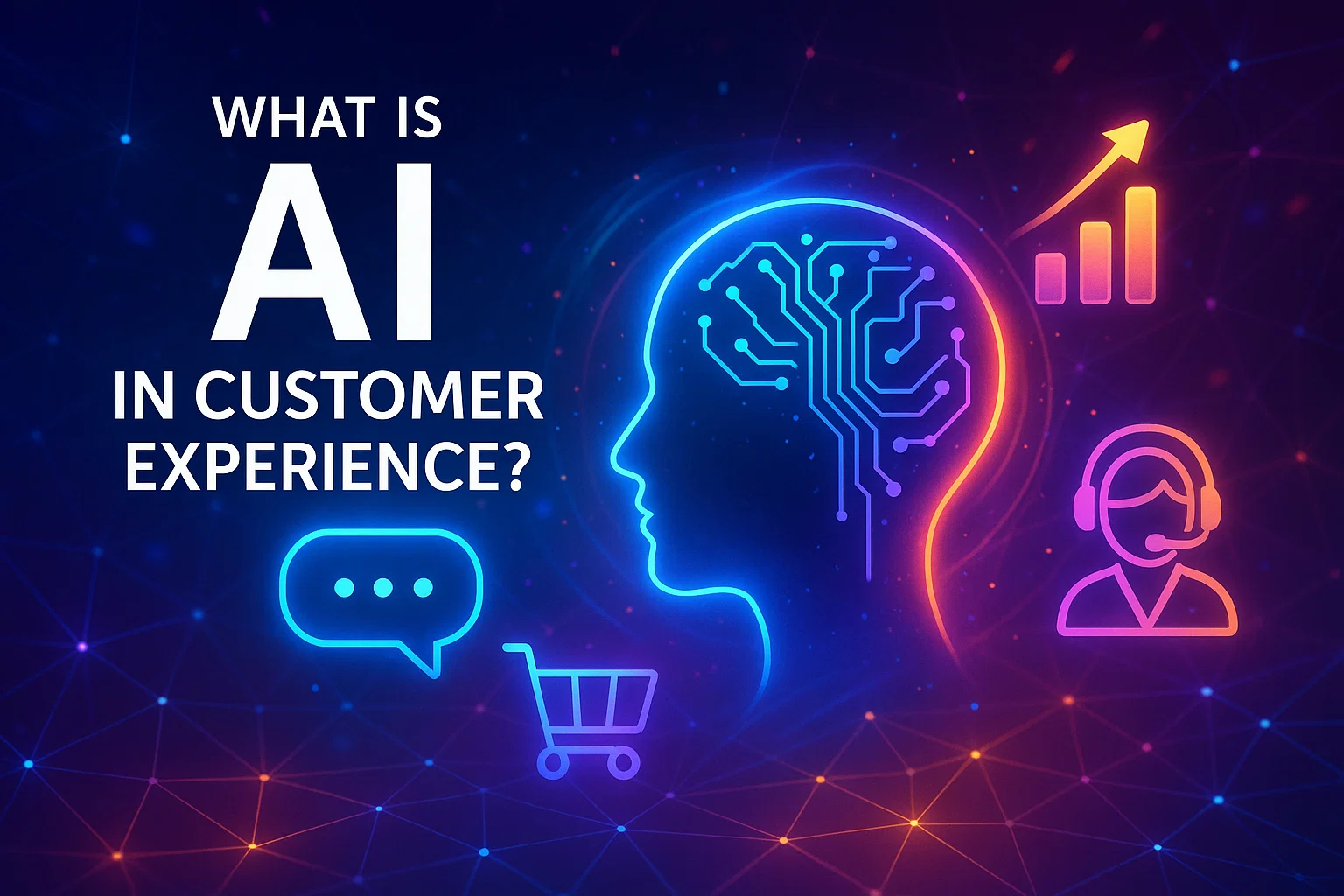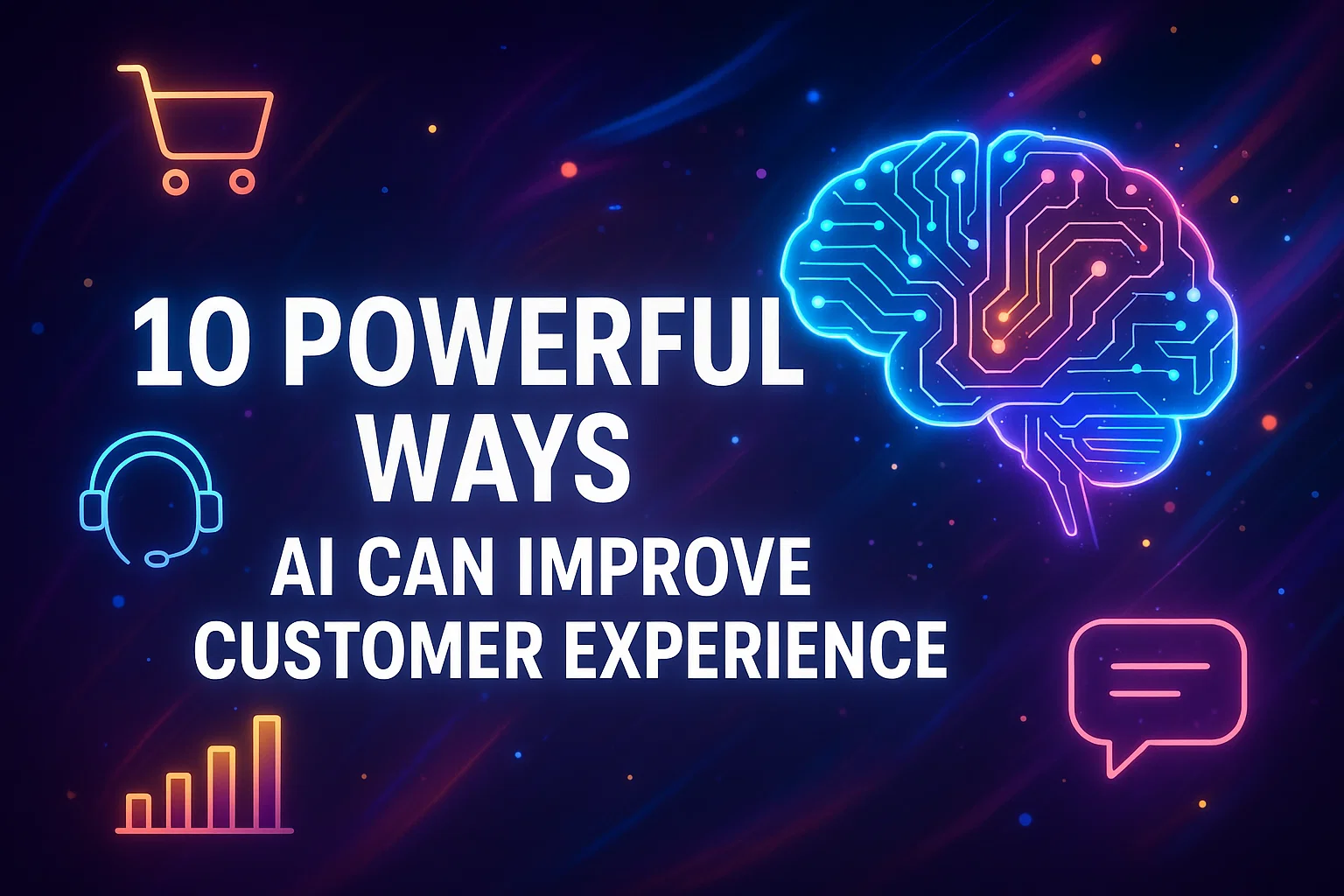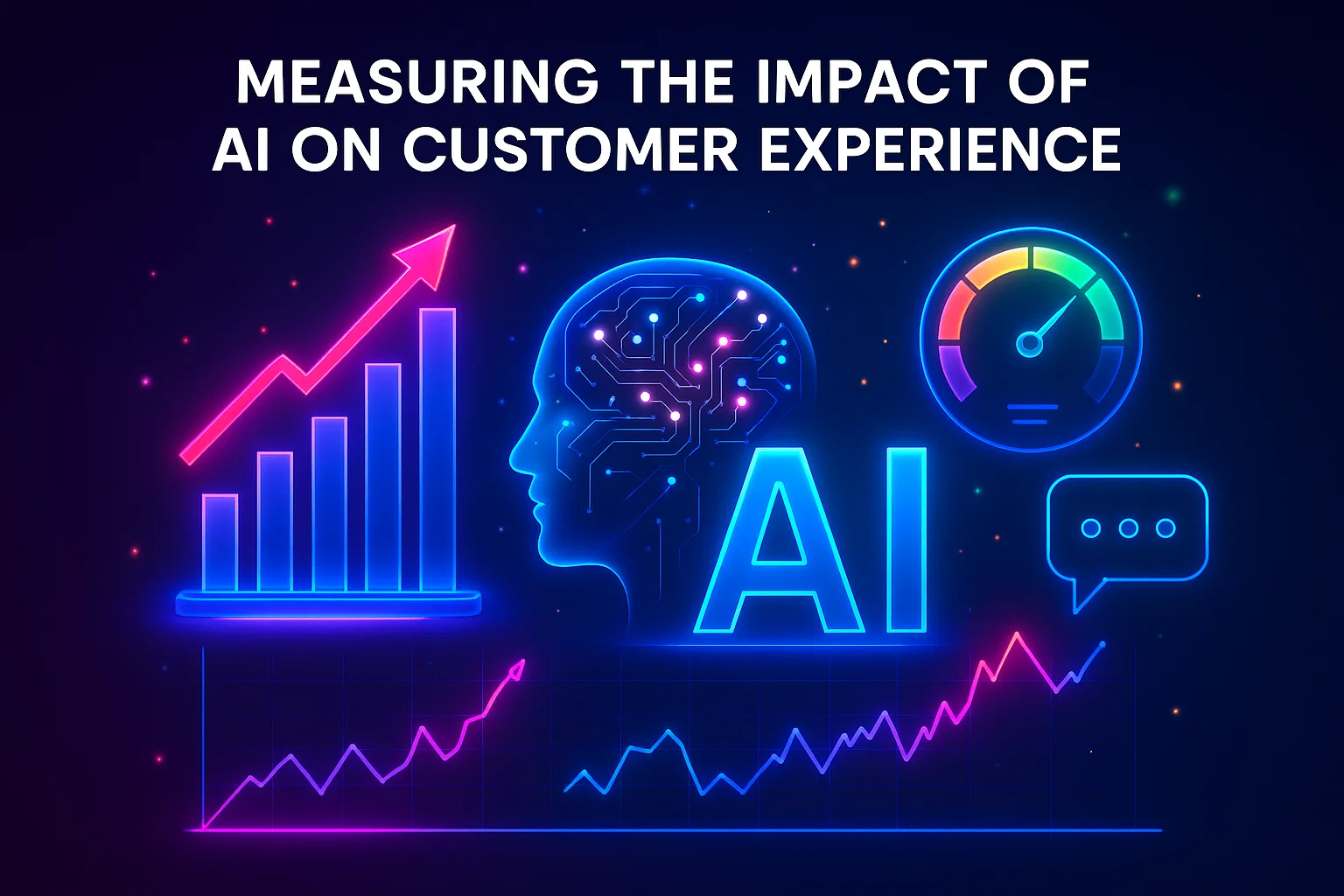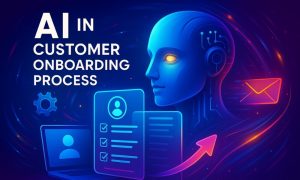AI improves customer experience by automating operations, and offering personalized interactions. It delivers predictive insights and ultimately drives the ultimate satisfaction level.
Customers nowadays highly expect fast, personalized, and seamless interactions, but it is often seen as challenging to keep up for most businesses. Long wait times, irrelevant recommendations, and frustrating chatbot interactions just result in lost sales and poor brand perception.
AI has just transformed this inconvenience for businesses and offers all result-driven solutions. With this, businesses don’t just respond to customers—they predict their needs and deliver smarter and faster solutions.

What is AI in Customer Experience?
AI in the customer experience mainly refers to an effective integration of artificial intelligence into the overall customer journey. Various artificial intelligence technologies, including machine learning, natural language processing (NLP), and predictive analytics, are added here to improve their journey with the company’s services.
AI algorithms are programmed in such ways that they can analyze behavioral data, sentiment, and contextual patterns to ensure businesses provide hyper-personalized, real-time responses.
Intelligent chatbots with deep learning models improve response time and improve customer-business relationships. AI in this instance mainly prioritizes urgent inquiries while delivering the perfect solutions to minimize churn risk.

10 Powerful Ways AI Can Improve Customer Experience
1. AI Chatbots as Virtual Assistant
AI-powered chatbots are a specialized computer program, programmed with NLP and machine learning to understand users’ intent and provide human-like conversations. This is the most effective tool businesses use in their customer support model and have seen an amazing improvement in their service level.
Up to 90% of customers now expect an instant response when reaching out with a service query. And that is exactly what AI chatbots do. It provides immediate and 24/7 support, with the professional handling of customer queries instantly. Beyond that, AI-powered chatbots are far more sophisticated today.
Businesses can ensure friendly engagement with the customer with even fewer live assistants needed. It analyzes the customer data quickly and provides support on various touchpoints.
2. Predictive Customer Service
Predictive Customer Service is the most AI-powered business strategy used to best analyze customer needs. The best part, you can know their realistic expectations and potential issues before they ask with this AI model.
For better analysis, the AI model is programmed to collect data from various sources, including past interactions, purchase history, browsing behavior, and feedback.
It identifies the patterns and usage and suggests the best recent likely outcomes. Based on the forecast of future customer behavior, you can take proactive actions and reduce their risk of frustration.
3. Sentiment Analysis
Sentiment analysis is the process of analyzing digital text expressed by the customer, especially to determine whether their expressions are positive or negative. Even according to Zendesk benchmark analysis, two-thirds of consumers who believe a business cares about their emotional state will become repeat customers.
That’s where sentiment analysis is a lifesaver for businesses now. It uses natural language processing (NLP) and machine learning to determine whether a piece of text from your customer expresses positive, negative, or neutral sentiments.
Even some algorithms are programmed to score the sentiment level, like how much they are satisfied and frustrated with your service. You will get valuable insights into product strengths and weaknesses and improve your service level.
4. Hyper-Personalized Interactions
It is the most used way to identify the ultimate customer experience by the usage of real-time data and artificial intelligence. Such AI-enabled interactions act as a world-class personalized concierge for every customer and give you a better history and preferences of them.
Beyond basic demographic or purchase history data, it highly focuses on consumer behavior data based on real-time browsing, purchasing frequency, clicks, taps, scrolls, in-app actions, feature usage, form submissions, and so on.
They are processed to build a deeper relationship with each customer and meet their unique preferences. You can easily grab the customer’s attention through this next-level personalization and increase engagement. There is even evidence that companies that excel at personalization generate 40% more revenue than the average others.
5. Voice Assistants
AI-assisted voice recognition is the most popular software solutions that use natural language processing to interact with customers’ devices and services through voice commands. Businesses get a hands-free and eyes-free way to communicate with their customer with this advanced technology.
It’s like you can set up an order with a voice command like “Alexa, Domino’s, Easy Order.” The voice assistant recognizes the command and sends it to Domino’s servers. NLP algorithms in the voice assistant analyze the text to understand the user’s intent and perform the requested task.
6. Seamless Omnichannel
It is an advanced customer-focused business strategy that provides an integrated journey through multiple channels where a customer might interact with the company. The channels are designed to reduce frustration and increase engagement from every touchpoint of the customers.
It includes a website, mobile app, social media, in-store, or via customer service. Through collecting data from the interaction points, businesses can offer the best and most precise functions according to customer preferences.
Data shows that companies with strong omnichannel customer engagement have witnessed an average of 89% retention of their customers. Personalized offers and recommendations drive sales to the next level.
7. AI-Powered CRM
It is an advanced AI-powered system that uses artificial intelligence to automate, personalize, and optimize customer interactions from all touchpoints. Business can analyze customer data and determine its behavior through patterns, preferences, and behaviors. It is all about understanding your customer more deeply and reducing their churn by frustration.
By refining customer behavior, the AI-powered CRM will predict purchase likelihood, churn risk, and potential upselling opportunities. Through automation and routine tasks in the CRM, you can ensure highly personalized interactions and create relevant experiences for them.
8. Customer Segmentation with AI
Customer segmentation is the process of dividing the customer base into distinct groups based on shared characteristics. It uses machine learning algorithms to collect customer data and group them into distinct segments based on shared characteristics. With this segmentation, businesses can be on point and know where and what to deliver.
It is not uncommon for most businesses to spend large portions of their budget on the wrong marketing campaigns that fall flat. For targeting the wrong people with the wrong messages, they end up with low conversion rates and high customer acquisition costs.
By providing relevant content with effective segmentation, businesses can increase customer engagement and drive higher conversion rates.
9. Advanced Text Analytics
Advanced text analytics defines the use of sophisticated techniques like NLP, sentiment analysis, topic modeling, and text summarization. Beyond some simple keyword extraction, this powerful analytics can better understand the customer experience and get deeper insights from texts.
With the large volume of customer issues, this AI model helps gain a deeper understanding of customer preferences, pain points, and needs.
Through this, they can provide more targeted marketing campaigns and personalized product recommendations. With topic modeling in the analysis, they can identify major issues earlier and also analyze customer reviews and social media activity. Netflix uses this to a very high degree.
10. AR and VR Technologies
AR, or augmented reality, is the process of integrating digital information into the real world. VR, or virtual reality, is another mostly used technology that refers to the use of interactive virtual spaces to enhance business operations.
Both of the technologies are programmed to improve the user’s perception of their surroundings by adding virtual elements.
For instance, AR uses cameras and sensors to display and add digital content to the user’s view of the real world. Customers are likely to see products in their own environment before purchasing.
On the other hand, VR creates a fully immersive digital environment. Customers can get realistic and engaging product demonstrations and utilize this experience. Beyond just improving the shopping level, it increases the purchases of the customers.

Measuring the Impact of AI on Customer Experience
To track the impact of AI in your customer experience, you can use the best KPIs in this instance, including CSAT, NPS, CES, response time, accuracy of AI interactions, and so on.
Have a detailed overview of what each one measures.
| Specific Metric | What It Measures |
| CSAT (Customer Satisfaction Score) | Overall satisfaction with AI-powered interactions. |
| NPS (Net Promoter Score) | Likelihood of customers recommending the brand after AI interaction. |
| Customer Retention Rate | Percentage of customers who remain loyal over time. |
| Customer Churn Rate | Percentage of customers who stop doing business with the company. |
| CES (Customer Effort Score) | Ease of interaction with AI systems. |
| Chatbot Completion Rate | Percentage of chatbot interactions that successfully complete the intended task. |
Conclusion
Customers are expecting instant resolution, but the outdated systems are causing delays, irrelevant responses, and frustration. The ultimate result? Lower satisfaction, reduced retention, and missed revenue opportunities.
AI transforms customer experience through streamlining the overall journey and predicting needs. Starting from chatbots that understand emotions to AI-driven product recommendations, businesses are attending to customers from every touchpoint.
Author
Shirikant is a proven customer success leader who combines sharp business insight with practical experience to improve retention and drive revenue. As the founder of Statwide, he designs customer-first business strategies that guide companies to turn users into loyal and long-term partners. His approaches are built on real results: stronger relationships, higher customer value, and lasting growth.








